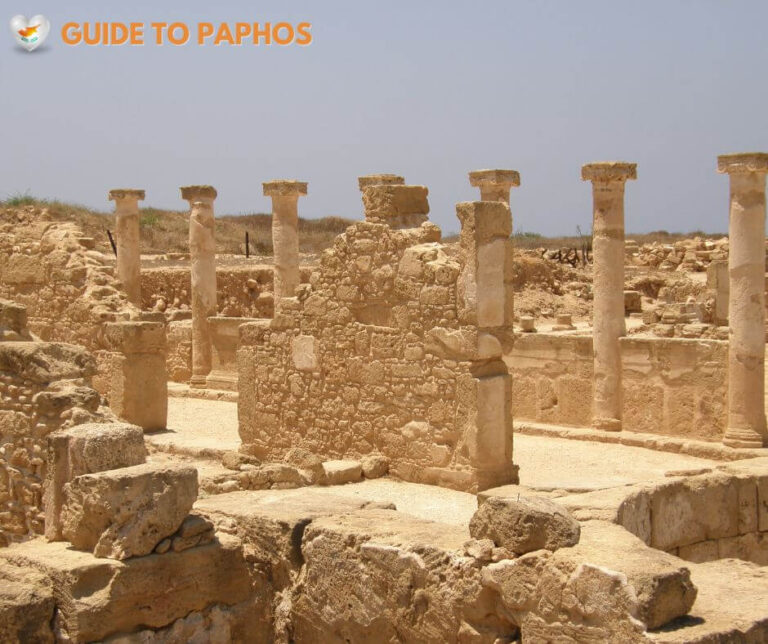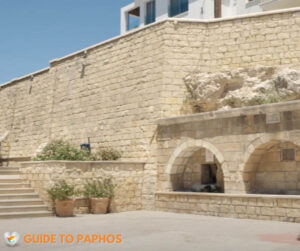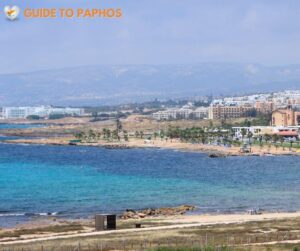Kato Pafos Archaeological Park
Welcome to the heart of Paphos, the Archaeological Site of Nea Paphos, where ancient history and breathtaking beauty blend into one!
The Archaeological Park of Kato Pafos is not just a mouthful to say; it’s also one of Cyprus’s most significant and famous archaeological sites, boasting a spot on the prestigious UNESCO World Heritage Sites list since 1980.
The Paphos Archaeological Park is where modern Cypriot culture meets the remnants of a once-great civilization.
Stroll through the park, take in the sights and smells, and let Greek and Roman history stories inspire and delight you.
It may still be under excavation, but the treasures within are sure to take you on an adventure to the beautiful Paphos Mosaics you won’t forget!
A Royal Relocation
Once upon a time, Nicocles, the last King of Palaipafos, decided to shake things up and moved the city to its current location near the harbor at the end of the 4th century BC.
During its zenith, Pafos stood as the unrivaled capital of Cyprus from the 2nd century BC to the 4th century AD.
Time Capsules of the Past
Upon entering the park, you’ll be immersed in a rich tapestry of ancient sites and monuments dating from the 4th century BC to the Middle Ages.
While predominantly showcasing Roman-era structures, the park is a veritable treasure trove of stunning historical gems.
Marvel at the intricate mosaic floors of four Roman villas, namely the houses of Dionysos, Theseus, Aion, and Orpheus, which showcase various scenes from Greek mythology.
A Walk Through History
Your adventure continues as you explore other vital monuments within the park, such as The lighthouse, the Asklepieion, the Odeon, the Agora, the Saranta Kolones (Forty Columns) Castle, the Limeniotissa ruins of an Early Christian Basilica, and the Tombs of the Kings.
The House of Dionysos
Step into this lavish villa occupying 2000 sq. m, with 556 sq. m covered in mosaic floors depicting mythological, vintage, and hunting scenes.
Named after the god Dionysos, this villa’s central courtyard was the heart of the house.
The House of Dionysus was built at the end of the 2nd century AD and met its demise after the 4th-century earthquakes.
Don’t miss the Hellenistic pebble mosaic of the mythical sea monster Scylla, found below the Roman villa.
The Enigmatic House of Aion
Only three rooms of this villa have been excavated, but its mosaic floor is a masterpiece of ancient Roman art.
Dating from around the mid-4th century AD, the main room features a captivating mosaic of the god Aion.
The central mosaic contains three horizontal frames with five panels, all surrounded by a geometric frame.
The Majestic House of Theseus
This villa, once the residence of the Roman proconsul or governor, was a blend of official and private quarters.
Dating back to the 2nd half of the 2nd century AD, it covered several insulae of the Hellenistic street plan and was occupied until the 7th century AD.
Check out the stunning mosaic of Theseus and the Minotaur in the southeast quarter.
The Mystical House of Orpheus
Adorned with mosaics from the third century AD, this villa showcases three mythological representations:
“Orpheus and his Lyre,” “Hercules and the Lion of Nemea,” and “The Amazon.”
While not currently on public display, the house remains a fascinating glimpse into ancient myths.
The Grand Theatre
Located in the northeastern area inside the ancient city, this theatre initially dates back to the end of the fourth century BC.
Under excavation by the University of Sydney since 1995, this site promises to reveal more secrets of Paphos’s rich history.
Explore Paphos, Embrace History
Whether you’re a history buff or simply curious about the past, Paphos Archaeological Park promises an unforgettable journey through time.
So, lace up your sandals and embark on a Cypriot adventure that will leave you awe-struck by the tales of ancient Cyprus.
Tips for Your Visit
- Wear comfortable shoes – Trust me, you will thank me later!
- Bring a water bottle and sunscreen. There’s no shop or kiosk inside the park!
- Visit in the early morning or afternoon to avoid the sun.
- Consider hiring a local tour guide to enhance your experience and learn more about the park’s history.
Ready to travel back in time?
Book your trip to Paphos today and unearth the wonders of this ancient city. Paphos awaits, ready to reveal its secrets to the adventurous traveler.
You won’t want to miss the jaw-dropping Roman villas, complete with pristine mosaic floors that will make you feel like you’re walking amongst gods.

| Paphos Archaeological Park | |
|---|---|
| A must-see attraction in Paphos | |
| Key Information: | |
| Location: | Paphos, Cyprus |
| Established: | 1980 |
| Excavations Started: | 1965 |
| Notable Features: | Four Roman villas with intricate mosaic floors, Asklepieion, Agora, Saranta Kolones Castle, Limeniotissa ruins, Tombs of the Kings |
| Current Excavation Projects: | Paphos Agora Project, MA-P Maloutena and Agora project |
| Attractions within the Park: | |
| House of Dionysos | This villa boasts 2000 sq. m of mosaic floors depicting mythological, vintage, and hunting scenes. |
| House of Aion | Known for its exceptional Roman mosaic floor with enigmatic symbolism, this villa dates back to the mid-4th century AD. |
| Theatre | Originally dated to the end of the fourth century BC, ongoing excavations have been conducted since 1995. |
How do I get to Paphos Archaeological Park?
If you’re wondering how to get to the Paphos Archaeological Park, you’re in luck!
The park is in the Paphos Harbour area and is easily accessible by bus. So jump on the 615 bus from the Coral Bay area, or hop on one heading in that direction.
You can also book a half-day tour that visits the park.
Where is the entrance to Paphos Archaeological Park?
The entrance to Paphos Archaeological Park is just a short and sweet walk from the bus station.
Head straight towards the harbour area, and voila! You’ll find the entrance on the right.
Don’t miss out on this incredible archaeological adventure.
Where is Kato ruins?
The Kato ruins are part of the Paphos Archaeological Park, which occupies a significant region of the essential ancient Greek and Roman city in southwest Cyprus.
The park is still excavated in the coastal city’s Nea Pafos (“New Paphos”) section.




